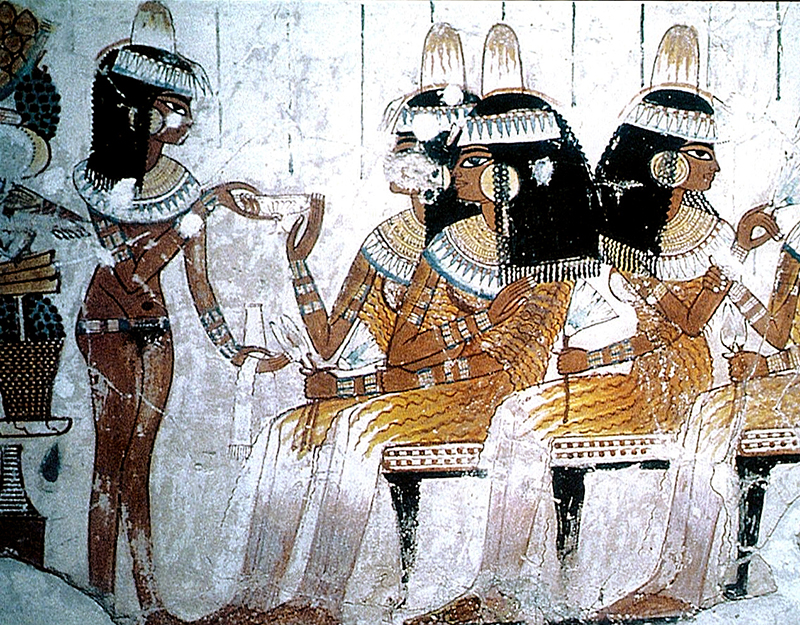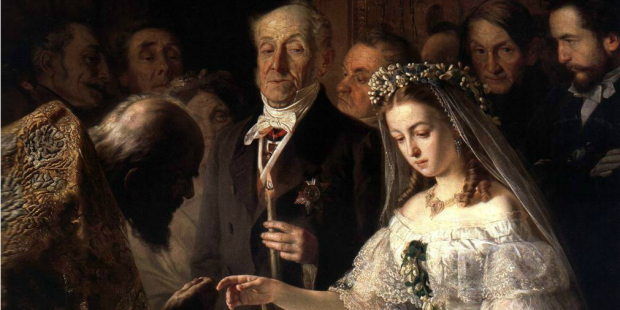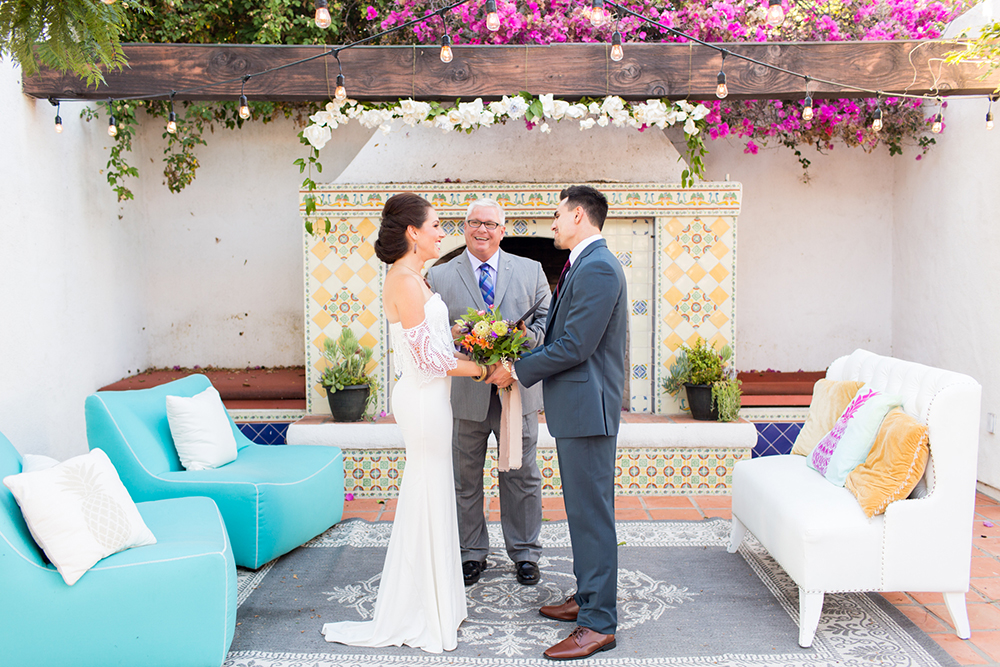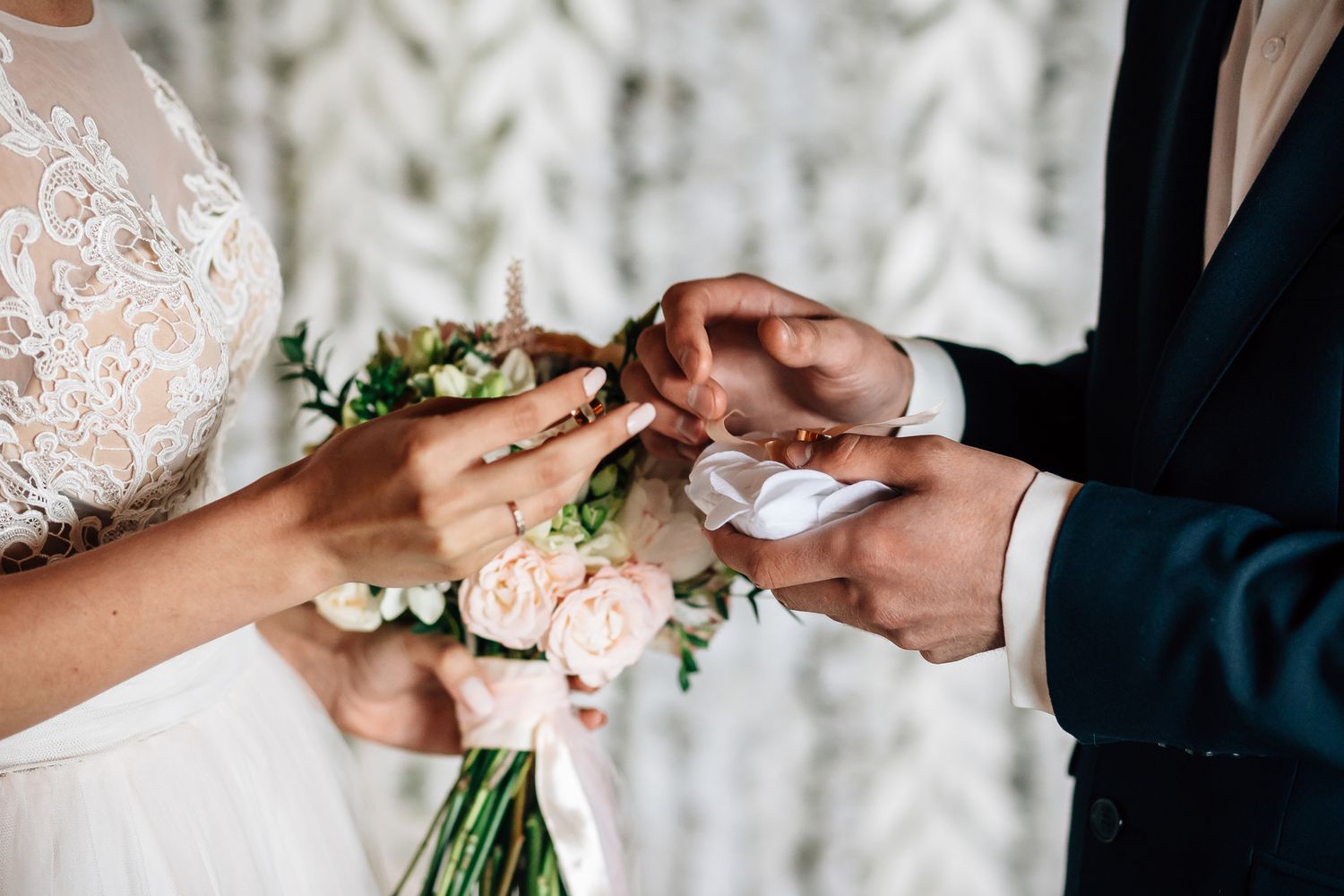Weddings, a timeless celebration of love, have evolved significantly over centuries. From ancient rituals deeply rooted in cultural traditions to modern-day extravaganzas, the institution of marriage has witnessed a remarkable transformation. In this article, we embark on a journey through time to explore the fascinating evolution of wedding traditions.
If you are missing the funds to finance your own wedding, you can get a quick loan from loan servicing for private lenders.
Ancient Beginnings
Ancient Egypt: The Pioneers of Wedding Rings

Ancient Egypt, a cradle of civilization, played a pioneering role in shaping early wedding customs. Here, we find the roots of a tradition that has persisted to this day: the wedding ring. Egyptians believed that the circle, with no beginning or end, symbolized eternity, making it a fitting emblem for the unending commitment of marriage.
Moreover, the exchange of gifts between couples and their families was a common practice. These gifts ranged from valuable jewelry to land, emphasizing the importance of unity not just between individuals but also between families. Ancient Egyptian weddings were grand affairs, often lasting several days, featuring feasts, music, and dance.
Ancient Rome: Nuptial Celebrations Fit for Emperors
In ancient Rome, weddings were more than just a union of two people; they were social and political events. The Romans introduced the concept of a dowry, a sum of money or property given by the bride’s family to the groom as a sign of their commitment. This practice, though rooted in patriarchal structures, laid the foundation for the economic aspects of modern weddings.
The wedding ceremony itself was a lavish affair, typically held in grand venues. A priest, or “pontifex,” presided over the proceedings, and the ceremony involved rituals such as the exchange of vows and the breaking of bread, symbolizing the couple’s shared life. These Roman customs have had a lasting impact on Western wedding traditions.
Medieval Times: The Influence of the Church
The Role of Christianity
With the spread of Christianity in medieval Europe, weddings took on a more religious significance. The Church became an integral part of the marriage ceremony, and weddings were often held in churches. The concept of marriage as a sacrament, a divine covenant, emerged during this time, elevating the institution of marriage to a sacred level.
Vows became central to the marriage ceremony, with couples pledging their commitment to each other and to God. Rings continued to symbolize eternity, with the addition of a religious blessing. This period also marked the emergence of the white wedding dress, symbolizing purity and innocence. While traditional elements were celebrated, this period also witnessed the introduction of eco-friendly packaging for wedding gifts, reflecting a growing environmental consciousness among the populace.
Feasts, Festivities, and Medieval Merriment
Despite the religious solemnity, medieval weddings were also occasions for merriment and feasting. These celebrations were often community events, bringing together not only the bride and groom’s families but also the entire village. Festivities included dancing, music, and elaborate banquets that showcased the wealth and social status of the families involved. Among the mementos and gifts exchanged during these occasions, it was not uncommon to see intricately designed ladies t-shirts as symbols of affection and kinship.
The Victorian Era: Romance and Sentimentality
The Influence of Queen Victoria

The Victorian era in the 19th century saw a significant shift in wedding traditions, thanks in part to the influence of Queen Victoria. When she married Prince Albert in 1840, she chose to wear a white wedding dress, a departure from the colorful gowns of the time. This choice popularized the white wedding dress and symbolized purity and innocence.
Additionally, the Victorian era saw the emergence of the wedding photograph. Previously, weddings were documented through paintings or written records, but now, couples can capture the moments on film, preserving the memories for generations to come. In a contrasting leap forward, modern times have introduced innovations like mobile IV therapy, catering to contemporary health and wellness needs.
The Modern Wedding: A Fusion of Tradition and Innovation
Changing Gender Roles
The 20th century brought substantial changes to wedding traditions. With the women’s suffrage movement and changing gender roles, weddings began to reflect evolving societal values. Women started to take more active roles in planning their weddings, and the notion of a “bridezilla” emerged as weddings became more personalized and elaborate. Additionally, vintage tapestries started to gain popularity as backdrops or decor, adding a touch of historical elegance to modern ceremonies.
Technological Advancements
Advancements in technology revolutionized weddings in the modern era. The advent of the internet allowed for long-distance wedding planning, enabling couples to research venues, book vendors, and even live stream their ceremonies to loved ones around the world. Social media platforms became a means to share wedding updates and photos, making weddings more public and interactive affairs. Moreover, many couples now opt for honeymoon packages at a luxury spa in Toronto, utilizing online reviews and ratings to make their selection.
Destination Weddings and Cultural Fusion
In recent years, destination weddings have gained popularity as couples seek unique and exotic settings for their weddings. This trend has led to a fusion of cultural traditions, with couples incorporating elements from various backgrounds into their ceremonies. Weddings have become a celebration not only of love but also of diversity and cultural heritage.
Sustainable Weddings: A Green Revolution
In recent years, there has been a notable shift towards more sustainable weddings. As environmental concerns become increasingly prominent, couples are finding creative ways to reduce the carbon footprint of their nuptials. From choosing eco-friendly venues to opting for locally sourced, organic catering, sustainability is taking center stage.
One innovative trend is the rise of zero-waste weddings, where couples strive to generate little to no waste during their celebration. This includes using biodegradable decorations, reusable tableware, and even gowns made from sustainable materials. Some couples also opt for milk chocolate edibles as eco-friendly favors, ensuring guests enjoy a treat that aligns with their green ethos. Some couples are even embracing the concept of “upcycled” weddings, where elements from previous ceremonies are incorporated into new celebrations, reducing waste and adding a unique touch of history to the event.
Tech-Infused Weddings: The Digital Frontier
The digital age has ushered in a new era of tech-infused weddings. Couples are leveraging technology to enhance every aspect of their special day. One of the most notable developments is the use of virtual reality (VR) and augmented reality (AR) in wedding planning and execution. Imagine attending a wedding from the comfort of your home, donning VR goggles to experience the ceremony as if you were physically present. This not only makes weddings accessible to distant friends and family but also adds a futuristic and immersive dimension to the celebration. Additionally, for those looking to shed some pre-wedding pounds, bariatric surgery has become a popular choice to achieve their desired look before the big day.
Moreover, drones are becoming a popular addition to wedding photography and videography. They capture breathtaking aerial shots and sweeping panoramic views of the ceremony and reception, adding a cinematic quality to the visual storytelling of the day. Drones are also employed to live-stream ceremonies to global audiences, transcending geographical boundaries.
Inclusive Celebrations: Breaking Down Barriers
Inclusivity is another hallmark of modern weddings. Couples are increasingly conscious of creating spaces that embrace diversity and cater to a wide range of preferences and needs. One notable shift is the move towards gender-neutral wedding ceremonies. Couples are reevaluating traditional gender roles in wedding parties, and some are opting for gender-neutral language and attire to make all participants feel comfortable and included. You can find a lot about modern weddings and various traditions in the online magazine for students.
Additionally, there is a growing recognition of the importance of accessible weddings. This means ensuring that venues are wheelchair-friendly, providing sign language interpreters for guests with hearing impairments, and offering sensory-friendly spaces for neurodiverse individuals. The goal is to make weddings a joyous experience for all, regardless of their physical or sensory abilities.
Cultural Revivals: Rediscovering Heritage
As the world becomes more interconnected, couples are embracing their cultural heritage with renewed enthusiasm. This trend involves a deep dive into ancestral customs and traditions that may have been overlooked in previous generations. The pool fences are even being incorporated into these cultural adaptations, symbolizing not only safety but also the blending of old and new traditions. Many couples are incorporating traditional rituals and ceremonies from their cultural backgrounds into their modern wedding celebrations.
For instance, Indian couples are reviving ancient customs like the “haldi” ceremony, where turmeric paste is applied to the bride and groom for purification and good luck. Similarly, Jewish weddings often feature the breaking of the glass, symbolizing the fragility of life and the permanence of marriage. These cultural revivals not only add richness and depth to weddings but also serve as a way to honor and preserve cultural legacies.
In some cases, couples may also consider incorporating modern elements, such as sustainable practices like dumpster rental, to align with their environmental values during the wedding preparations.
Pop-Up Weddings: Spontaneity and Intimacy

In contrast to the grand, elaborate weddings of the past, there is a rising trend of 20 x 20 trade show booth pop-up weddings characterized by spontaneity and intimacy. Pop-up weddings are designed for couples who prefer a more low-key and unconventional approach to tying the knot. These weddings often take place in unexpected locations, such as scenic outdoor settings, art galleries, or even private homes. This unique style of wedding allows couples to exchange vows in a creative and personalized way while accommodating a larger number of guests within a 20 x 20 trade show booth setup, adding an element of innovation to their special day.
Pop-up weddings are typically smaller in scale, focusing on a select group of close friends and family. This allows couples to create deeply personal and meaningful experiences without the stress and expense of a large guest list. The element of surprise and the sense of adventure make pop-up weddings a unique and memorable option for those seeking a non-traditional wedding experience.
The Future of Weddings: Beyond Earth
As we peer into the future, an audacious yet captivating notion emerges weddings beyond Earth. The once-unimaginable concept of celestial weddings is inching closer to reality with the advent of commercial space travel. Imagine exchanging vows aboard a spacecraft, with Earth itself as your backdrop, or perhaps having your first dance on the surface of the moon, bathed in the soft glow of Earth’s reflection in the lunar sky. While this may seem like a far-fetched fantasy today, the rapid advancements in space tourism suggest that space weddings could become a reality in the not-so-distant future.
SpaceX, Blue Origin, and other private space companies are actively working on making space tourism a feasible option for civilians. As technology evolves and costs decrease, the prospect of holding a wedding among the stars becomes increasingly attainable. Soon, couples may have the opportunity to declare their love in a setting that transcends terrestrial boundaries, under the watchful gaze of the cosmos.
Imagine a wedding ceremony aboard a space station, where the bride and groom float weightlessly, exchanging rings as they orbit Earth. Or a Martian wedding, with the rust-colored landscape of the Red Planet providing a surreal backdrop. These futuristic nuptials would not only be a celebration of love but also a testament to human innovation and the boundless possibilities of the universe.
Were you aware that many people utilize renowned tree removal in Tampa to get rid of unnecessary trees to prepare the area for their special day?
Conclusion
In tracing the evolution of wedding traditions from ancient rituals to modern extravaganzas, we find a rich tapestry of customs, values, and innovations. From the grandeur of ancient Rome to the sustainability of today’s eco-conscious weddings, from tech-infused celebrations to inclusive and culturally diverse ceremonies, weddings have always mirrored the spirit of their times. The bonsai care is another facet of modern weddings, where couples incorporate the art of nurturing miniature trees into their special day, symbolizing the growth and care of their relationship.
As we gaze into the future, the prospect of space weddings stands as a symbol of human ambition and the unending quest for unique and meaningful experiences. While space weddings may still be a dream on the horizon, they remind us that the essence of weddings—the celebration of love, unity, and shared commitment—transcends earthly boundaries.
In every era, weddings have been a testament to the enduring power of love, a force that binds us together across time, culture, and even the vast expanse of space. As we continue to innovate and redefine what weddings mean to us, one thing remains constant: the profound significance of two people coming together to create a new chapter in the story of humanity — a story filled with love, hope, and the promise of a brighter future.
Were you aware that many companies that organize weddings utilized services from the renowned company that does web design in Chicago to enhance their websites?

